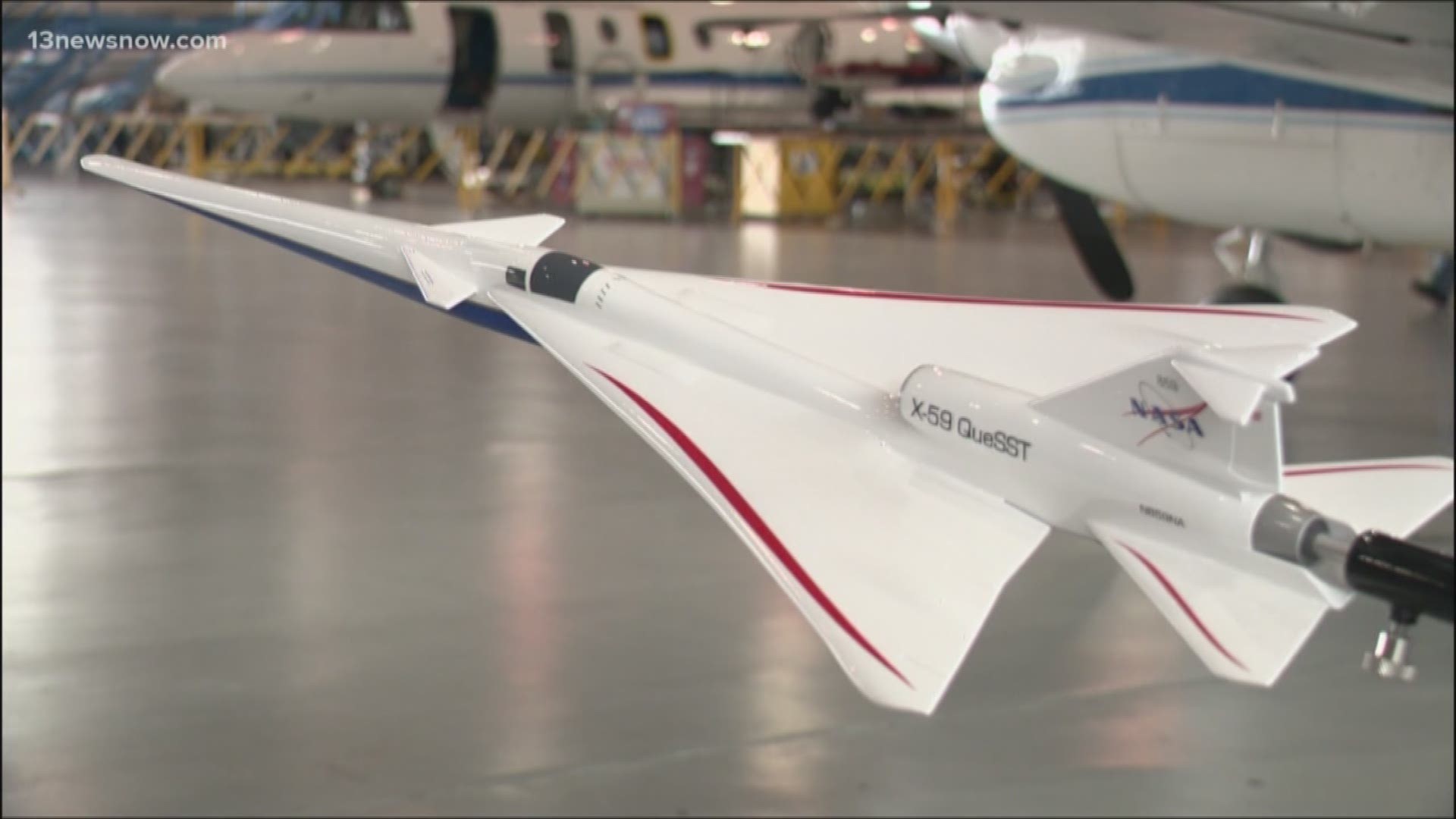HAMPTON, Va. — Every day, thousands of planes shuttle people and cargo through the sky.
Now, researchers at NASA Langley want to make air travel twice as fast.
Randy Bailey, a NASA expert, said his team is working on to make supersonic travel a reality.
“If we can fly supersonic over land, we will significantly impact people’s means of travel. That speed is going to be twice as fast as a conventional airplane,” said Bailey.
To avoid causing the loudness of a supersonic boom, Xternal Visibility System (XVS) is installed into the X-59 Quiet SuperSonic aircraft or QueSST.
The design has a slimstream nose to temper shock waves emitted toward the ground when the aircraft is flying supersonic.
“The shape of the vehicle is critical to the X-59 mission so it’s 50 feet of the nose between where the pilot sits and the tip of the nose,” said Bailey.
The shape would slow down the shock waves and reduce the noise, but the design leaves no room for windows. Cameras mounted externally on the aircraft would present a forward-facing augmented reality on the display screen in front of the pilot.
“So instead of that we’re using camera display computers in order to create an electronic window from the pilot,” said Bailey.
Researchers at NASA Langley are now testing the blended virtual and augmented reality screens to what a pilot would see with their eyes. NASA Langley’s Chief pilot of research services technology, Rick Yasky, said the testing is vital for the future.
“We’re evaluating how well the pilot up front, looking out the window. The old way of doing business is doing compared to the pilot in the back, who’s looking at the XVS screen. The aircraft is being built right now, and is scheduled for first flight in 2021,” said Yansky.



